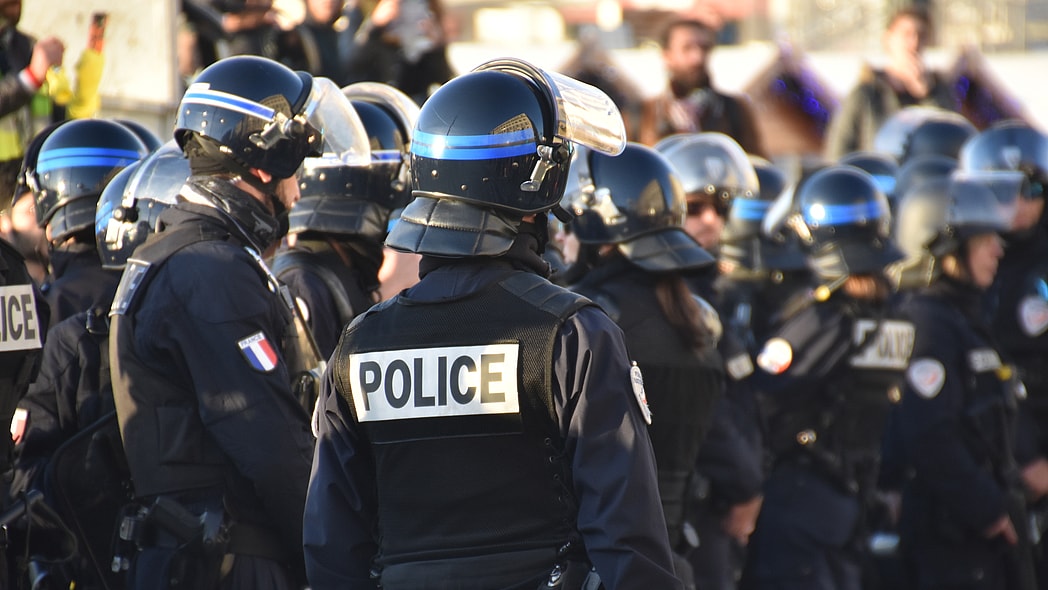Once upon a time, in a not-so-far-away kingdom built on folklore and fantasy, the citizens believed things.
They believed a legend that their esteemed founders once cast a spell on a piece of paper, called it the Constitution and bequeathed unto them liberty and justice for all. They believed they could dream of equality and make it so. They believed in the American dream. They believed in America. And dreams. And magic.
To be fair, it was easy to understand why these people believed in fairytales. In a beautiful land of make-believe where human traffickers are fashioned into demigods and fiction is preferable to the truth. But, while time, science and reality eventually washed away most of these false notions, the people of this unreal utopia held on to one particular myth as if it were handed down from the heavens.
They believed in the police.
How policing works—or that it works at all—is one of the most fantastic but persistent pieces of American fiction. This false notion is so commonly accepted that the premise is rarely contested. According to the tightly spun historical yarn, police protect people from danger, solve crimes and prevent chaos. According to this longstanding legend, they selflessly walk the thin blue line, risking their lives for you and me. Sure, they sometimes kill people. But, without these brave guardians of safety and pursuers of justice, there’d be anarchy. As the saying goes: “You can’t make an omelet without breaking a few eggs—mostly the brown ones.”
Therefore, anyone who criticizes the current system of law enforcement must hate law and order. It is a political reality. Anything else is absurd, which is why, during President Joe Biden’s first State of the Union address, he included the one line that he knew would garner bipartisan support.
“We should all agree that the answer is not to defund the police,” he explained whitely. “It’s to fund the police.”
Who could argue with that? It seems so reasonable and noncontroversial, even the performative, fiscally conservative Republicans agreed that more money is the answer, responding with exultant applause at the president’s attempt to lop off the head of the radically insane “defund the police” movement. In America, money makes things happen. And, if money is good and police are good, giving police more money is great. There is just one thing wrong with this magical math:
It does not work.
According to facts, research and actual data, not only is pouring taxpayer money into policing an exercise in futility, it is the one thing we know doesn’t work. If there is one thing we can be sure of, it’s that funding the police is absolutely not the answer.
Here’s why.
1. No one wants more police funding.
While we can have a debate over whether defunding the police works or what it even looks like, we should first acknowledge why this topic of conversation even exists. This increasingly popular talking point that a fistful of dollars will magically cure two centuries of bad police policy is a response to defund-the-police movement rhetoric seeping into the political discourse. However, aside from the politicians, police officers and people who make bodycams, the majority of Americans either want police budgets to decrease or stay the same.
A year ago, an Ipsos/USAToday poll found that 57 percent of respondents supported funding the police “at the same level it is now,” barely edging out those who want to redirect funds for social services.” A June 2021 Harris poll found that 57 percent of the people surveyed would like the police presence in their community to decrease or stay the same. And, according to an October survey by Pew Research, most Americans—regardless of race or ethnicity—prefer that spending on law enforcement either decreases or stays the same.
In all fairness, just last month, Politico found that Americans believed that “increasing funding for police departments would decrease the violent crime rate,” which seems like a perfectly reasonable conclusion, except for one thing:
2. Police don’t prevent crime.
Bigger police budgets give cities the ability to hire police and everyone knows that more cops equal less crime, right?
Not so fast, my friend.
While it may seem like common sense, one of the biggest debates in the field of criminal justice is whether or not enlarging the size of a police department translates to lower crime rates. “For decades, scholars have acknowledged that local crime rates cannot be predicted by officer strength and police budgets,” the New York Times reports. “Sometimes a boost for policing is followed by a drop in crime; sometimes it isn’t.”
In some cases, the presence of police merely displaces crime, pushing it to places where the cops aren’t patrolling. In other cases, the so-called “crimes” that are being prevented are traffic violations and victimless crimes. And while a recent paper found that one additional police officer in a city would prevent between 0.06 and 0.1 homicides, the authors also found that the rise in law enforcement personnel results in more low-level arrests that disproportionately affect Black citizens, including disorderly conduct, drug possession and loitering.
Even when laws are broken, officers usually don’t catch the culprits. Most criminal acts are not reported and almost always remain unsolved. In fact, only 2 percent of serious crimes ever result in a conviction. In the last quarter-century, there’s only been one year when police solved 50 percent of violent crimes—in 1999, the first year of one of the most wonderful administrations in history—when Cash Money took over for the nine-nine and two thousand.
It’s why researchers note that “literature has not generally supported an association between levels of police presence and crime rates, calling it, “one of the best-kept secrets in modern life.”
Still, there’s a good reason you shouldn’t worry about criminals roaming the street:
3. There’s not that much crime.
The proliferation of social media, cable news and the availability of information might make it feel more dangerous but, when it comes to murder and violent crime, Americans are still living in one of the safest periods in decades, according to FBI data.
Although violent crimes increased by 3 percent in 2020 (the last year for which we have statistics), the violent crime rate is half as high as 30 years ago. Yet, according to Gallup pollsters, most people believe that crime is rising in their neighborhood. While many attribute the recent rise in homicide rates during the pandemic to “defund the police rhetoric,” sociologists, criminologists, and yes, even the police understand that crime is a socioeconomic phenomenon. Instead of murderers checking cable news and Google Trends, perhaps the unprecedented spike in crime rates has something to do with one of the most significant unemployment spikes in history.
But, as long as we are living in this gingerbread world where the law is applied equally, crimes are solved by badge-wearing gumshoes and math matters, what would happen if we shoveled more money into police coffers?
4. Increased funding doesn’t result in better policing.
A few things:
- Spending money on police doesn’t mean fewer crimes: The states that spend the most per capita on policing are also among the most dangerous. This phenomenon doesn’t just apply to rural states like Vermont and Rhode Island, it even applies to cities like Baltimore and Detroit, which spend large percentages of their budgets on policing, yet still experience high crime rates.
- Police don’t need more training; they need better training: According to Police Executive Research Forum, the average police recruit spends 58 hours on firearm training, more than they spend on de-escalation, crisis intervention and actually learning the law combined. Perhaps they could simply repurpose the eight hours they spend literally learning how to use a stick (they call it a “baton”).
- They spend a lot of money on dumb stuff: Since 1990, the Department of Defense has given $7 billion on militarizing the police, including tanks and semiautomatic rifles. Of course, maybe more tech would help.
- Body cameras won’t work: A meta-analysis by the National Institute for Justice of law enforcement departments that use body-worn cameras found “no significant effect on police use of force, and use of cameras was associated with a statistically significant increase in assaults against officers.
There’s one other thing that proves the myth of increasing funding to police departments:
5. We have been funding the police this whole time.
According to the Council on Criminal Justice, per capita police spending nearly doubled over the last four decades. In 1982, state and local police expenditures averaged nearly $5,000. We’re now averaging over $10,000 per citizen. We are already giving the police more money.
Yet, with all this money, body armor, cameras and posturing, why haven’t police stopped shooting Black people in the face? Why haven’t police complaints dropped dramatically? Has there been an increase in crimes being solved? Have traffic accidents gone down? Has the perception of safety gone up?
No, it hasn’t. Because the world is not made of myths or fictional counternarratives. The problem with policing is real. Police brutality is real. The only fake thing in this entire equation is a desire to shut down progress and criminal justice reform. Or maybe, the people who constructed this copaganda counternarrative want us to die. Perhaps, more dead Black bodies are the only way they can live happily ever after…
With liberty and justice for all.

Michael Harriot is a writer, cultural critic and championship-level Spades player. His book, Black AF History: The Unwhitewashed Story of America, will be released in 2022.
TheGrio is FREE on your TV via Apple TV, Amazon Fire, Roku, and Android TV. Please download theGrio mobile apps today!


